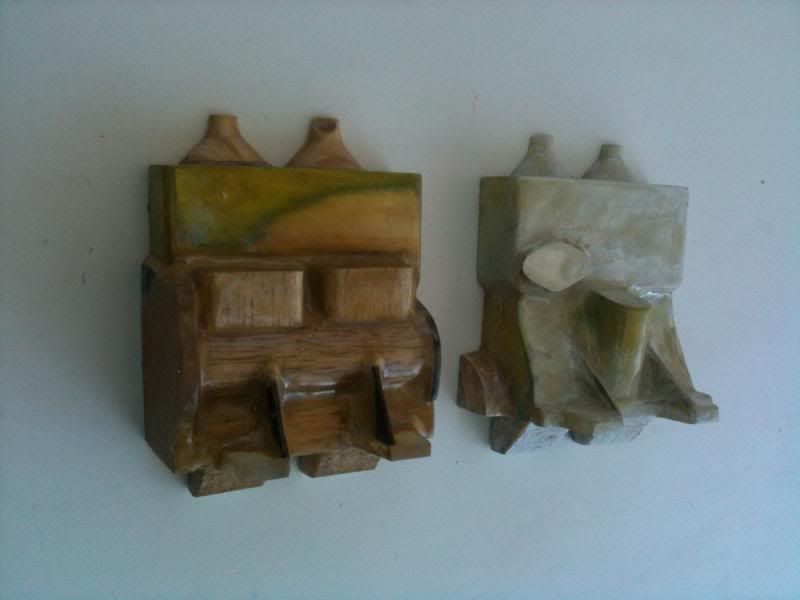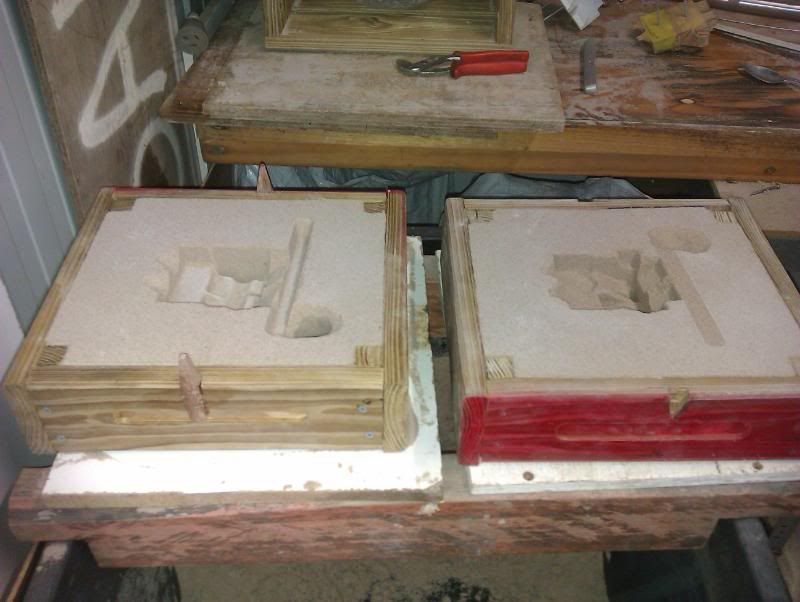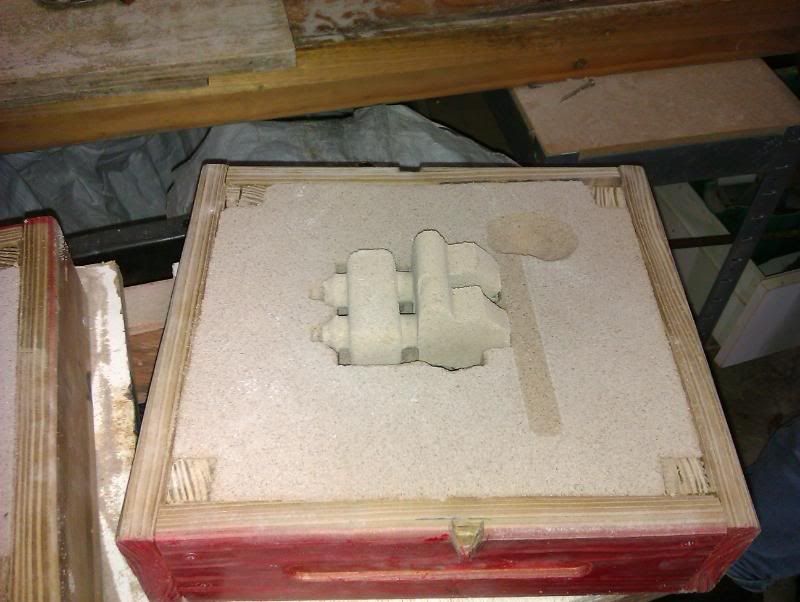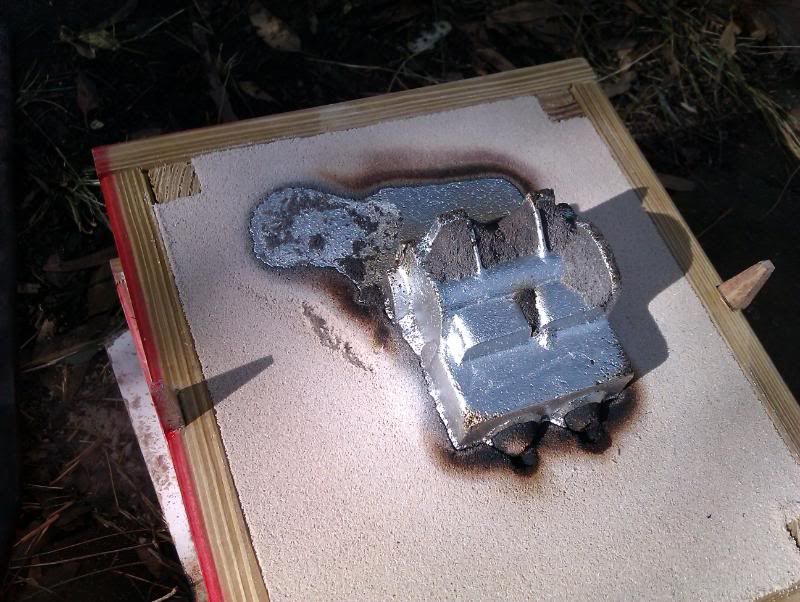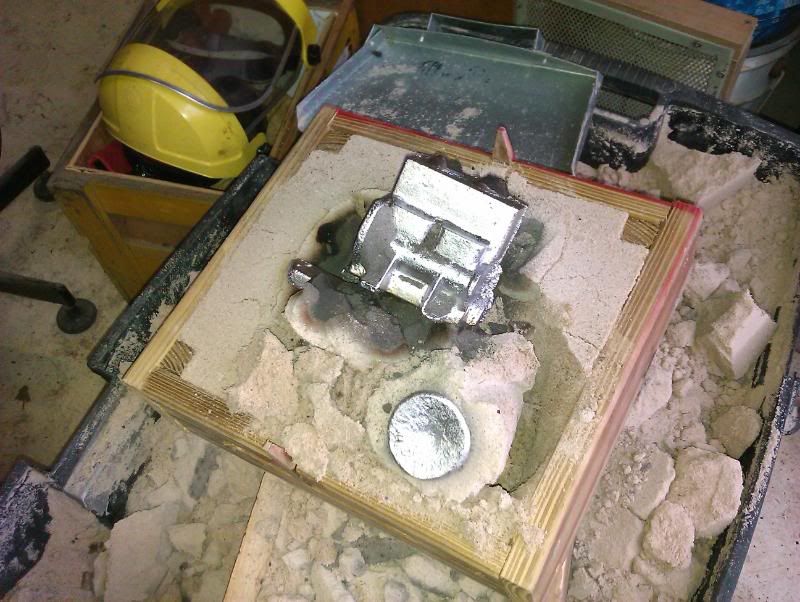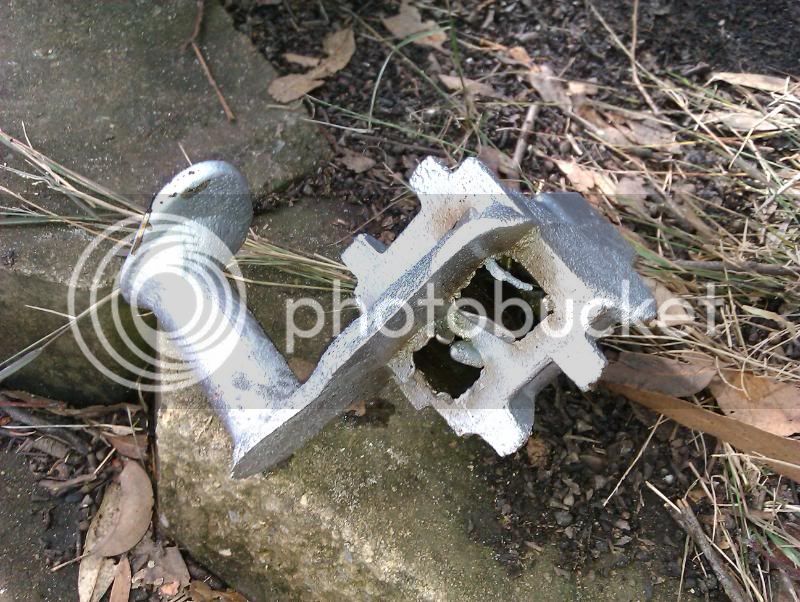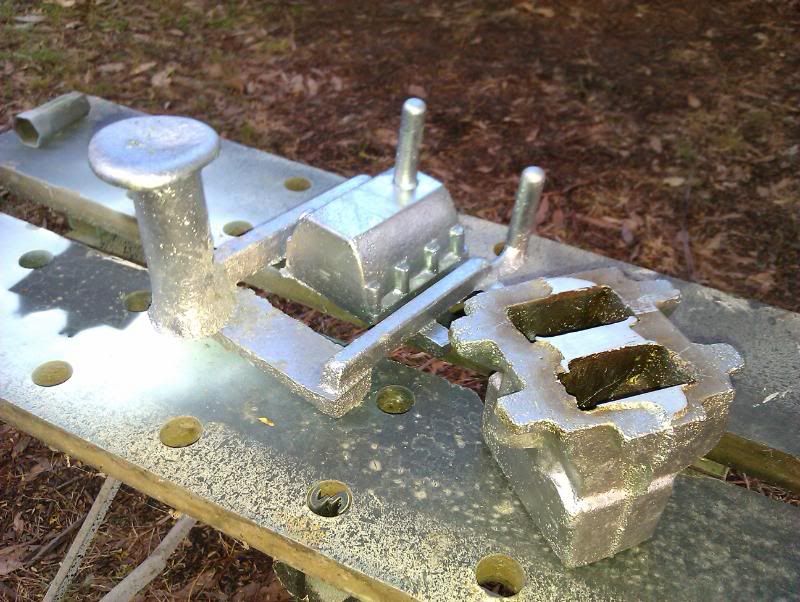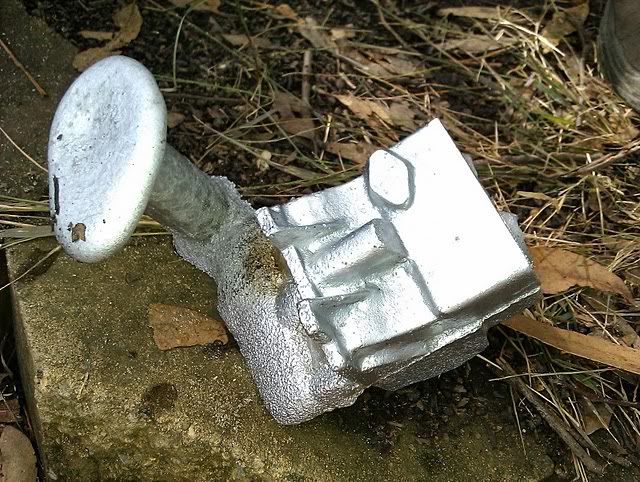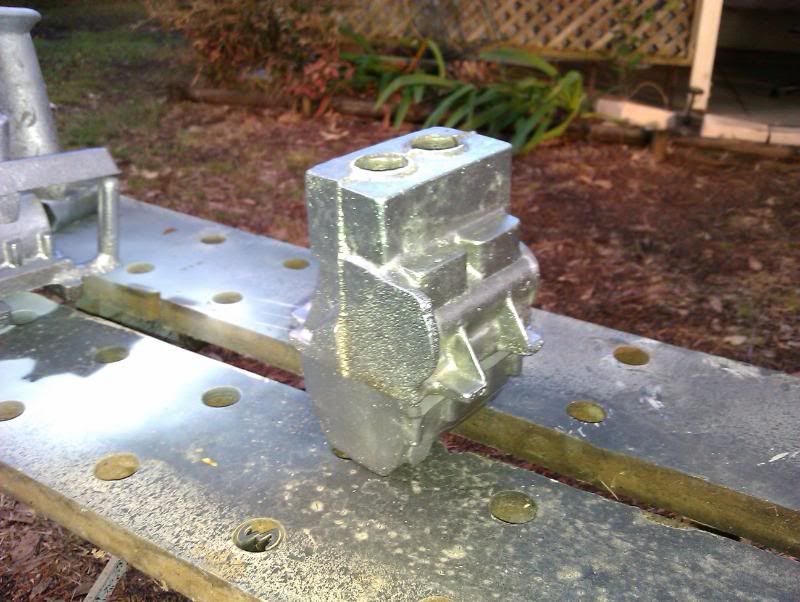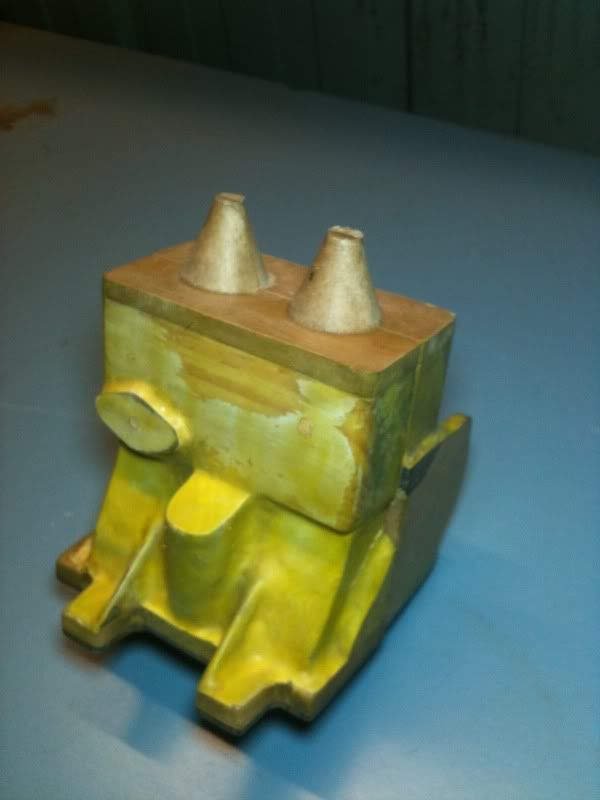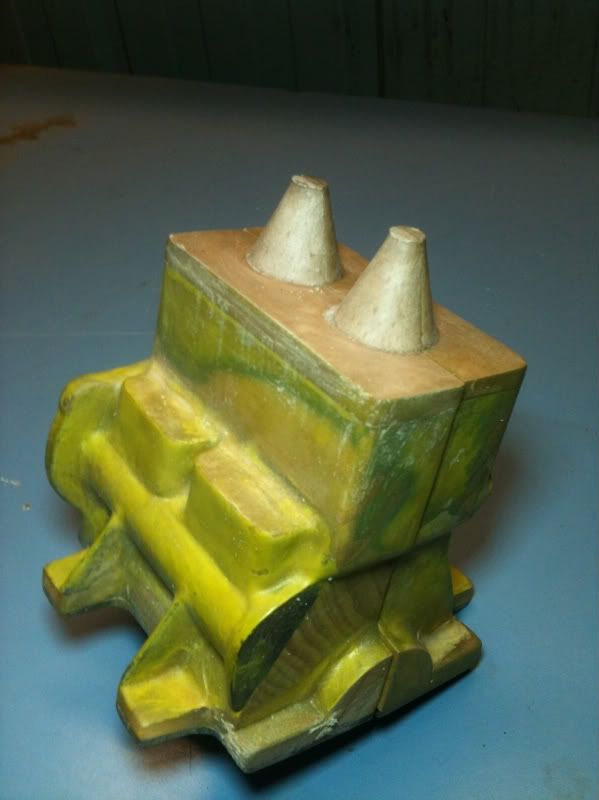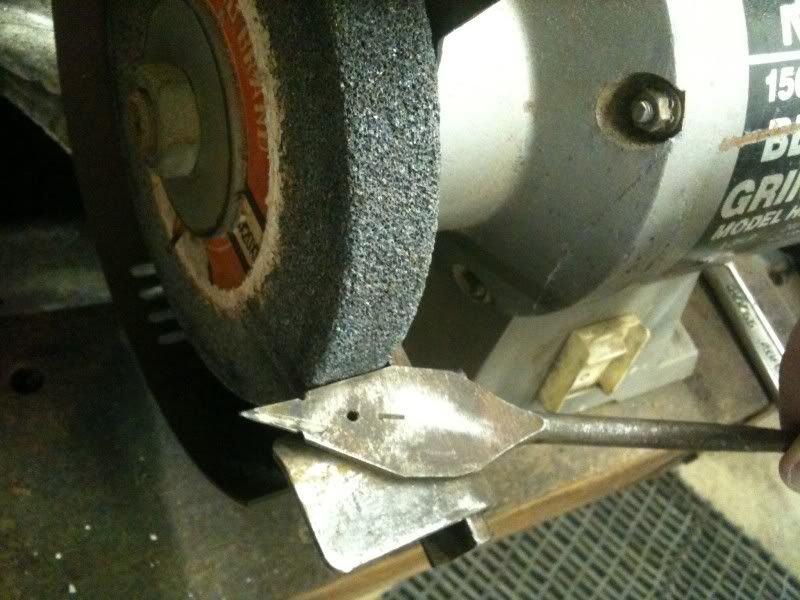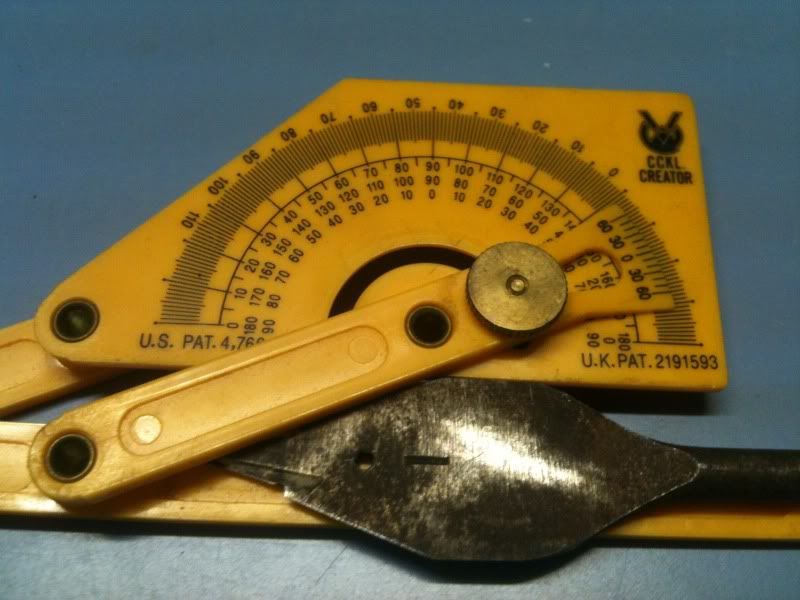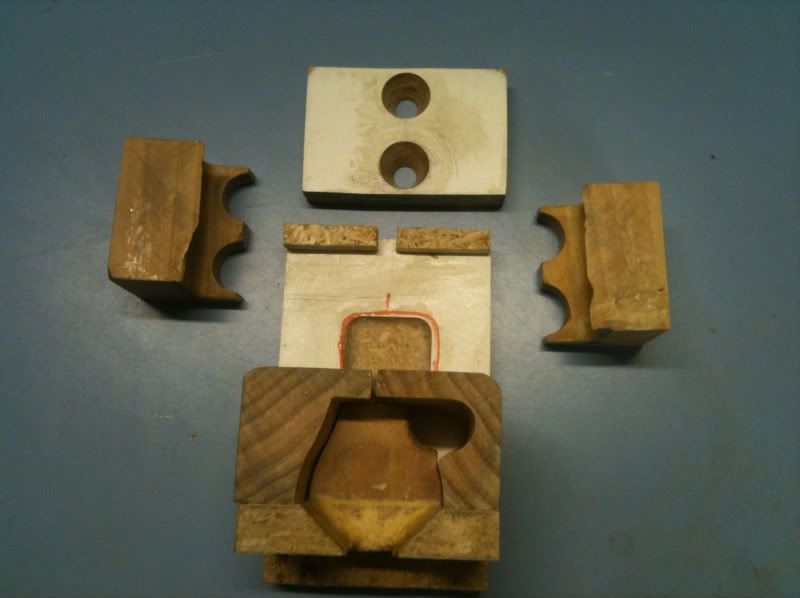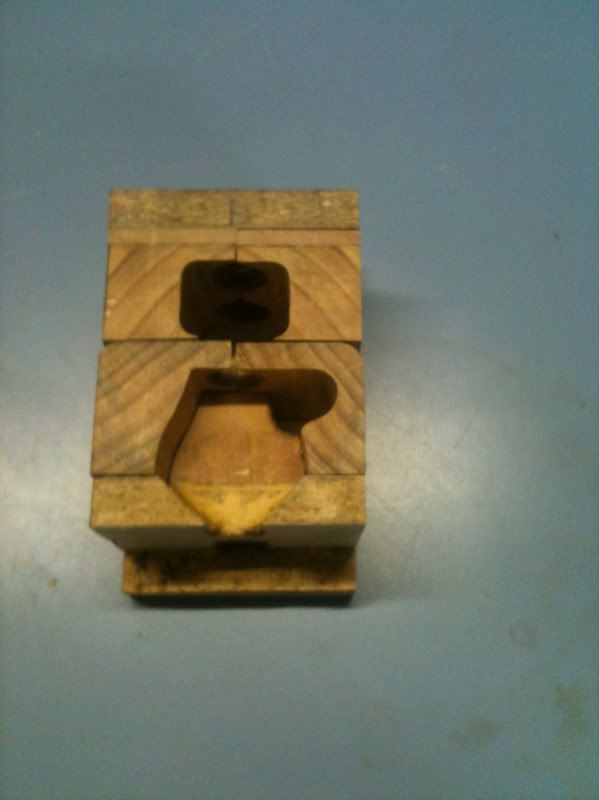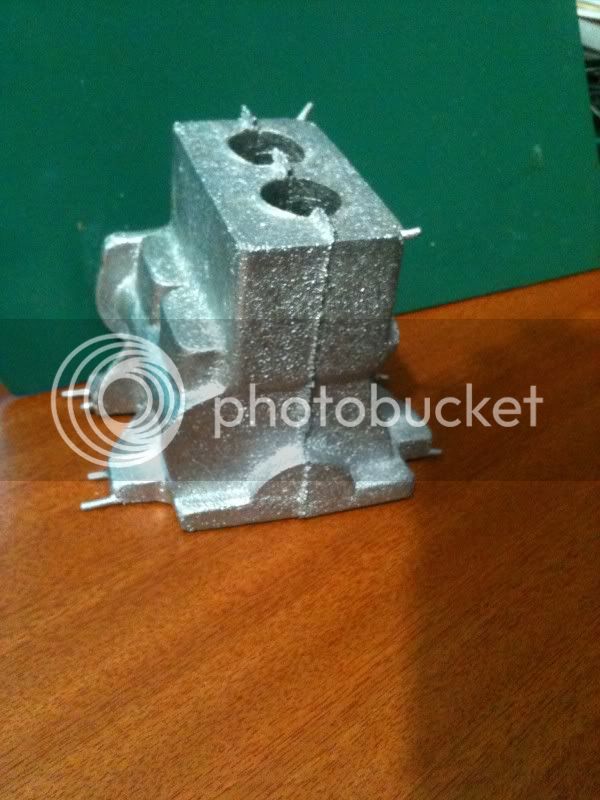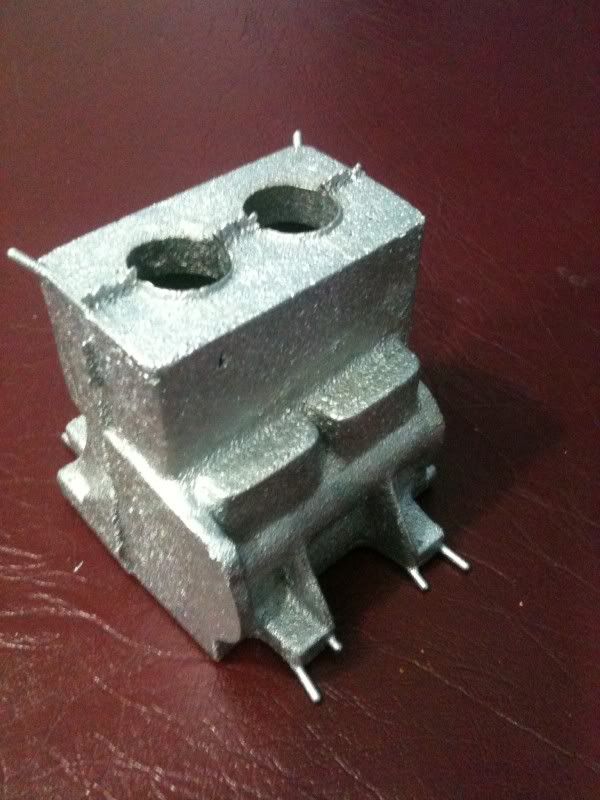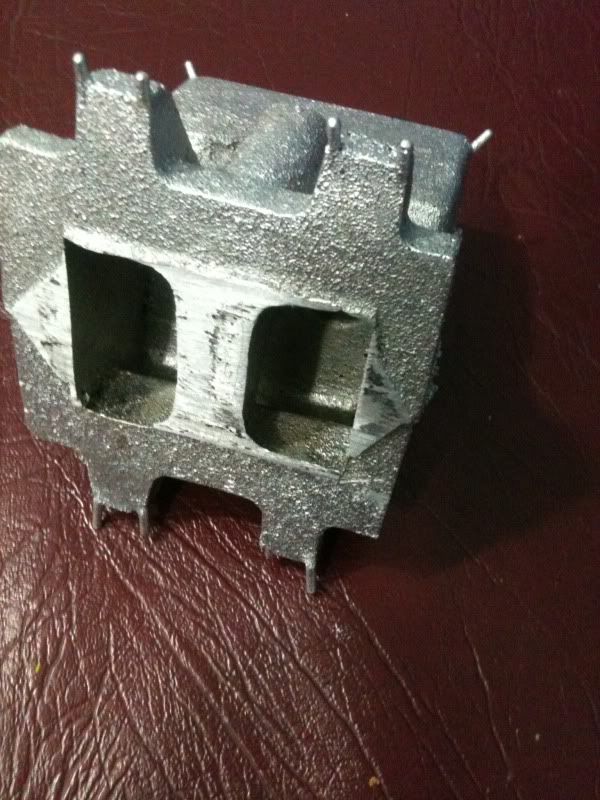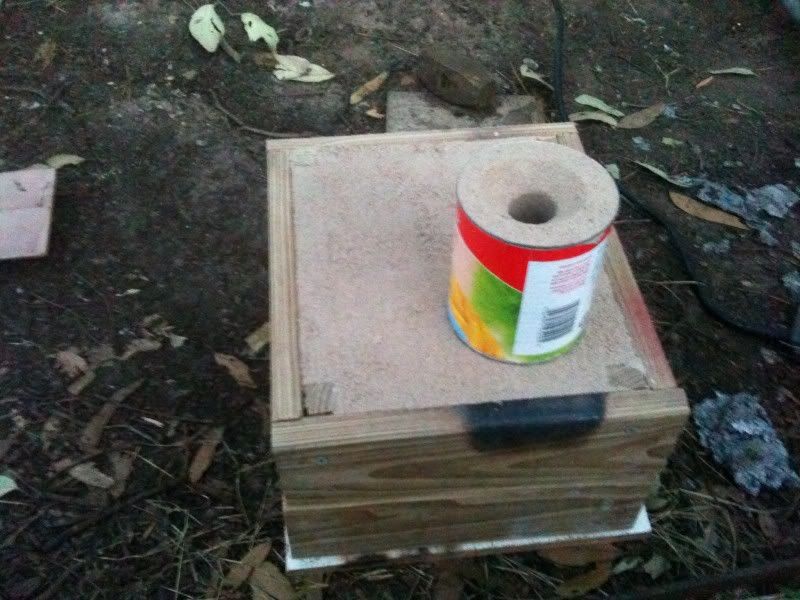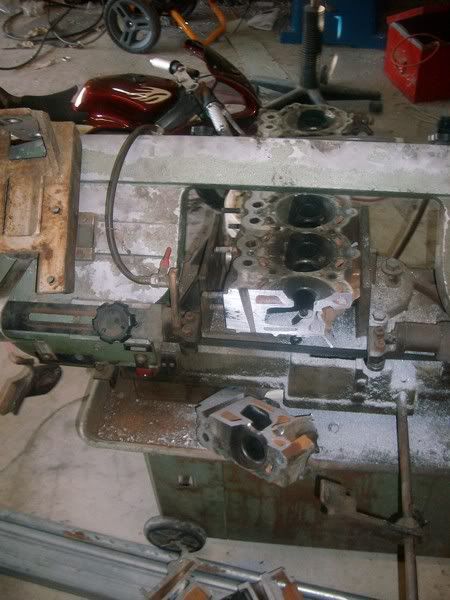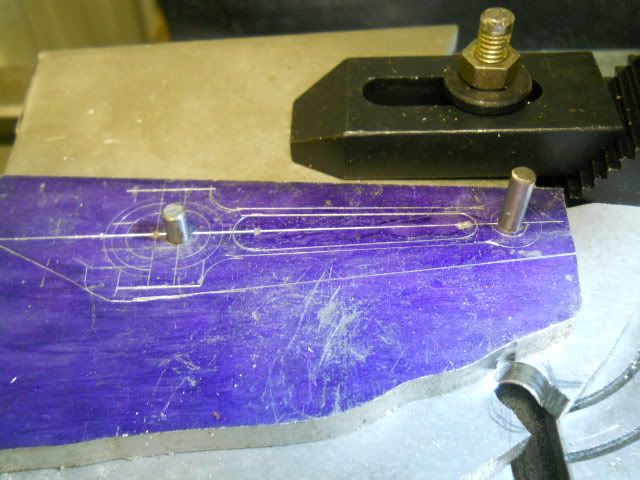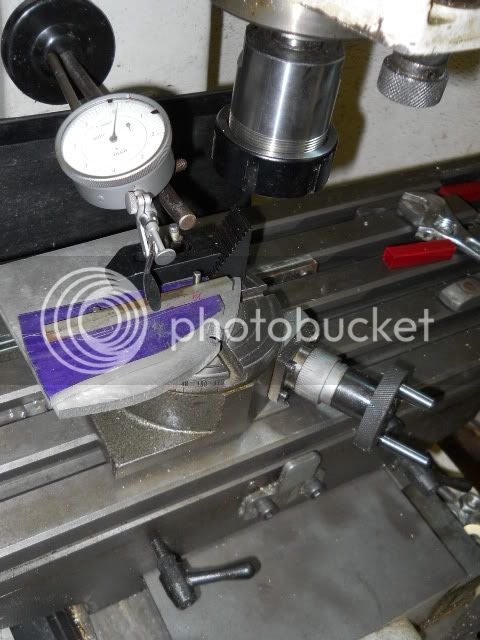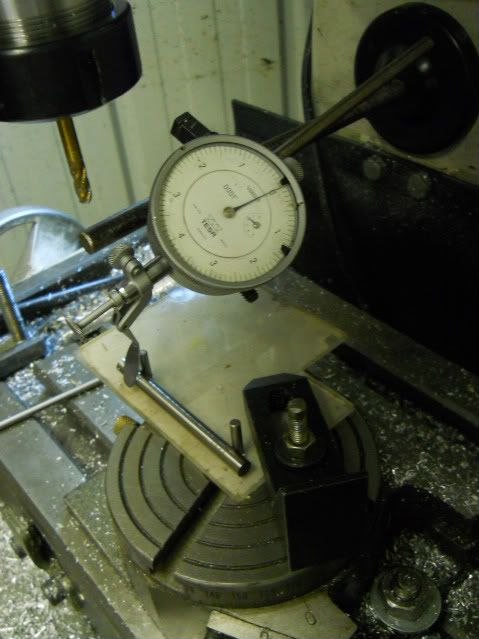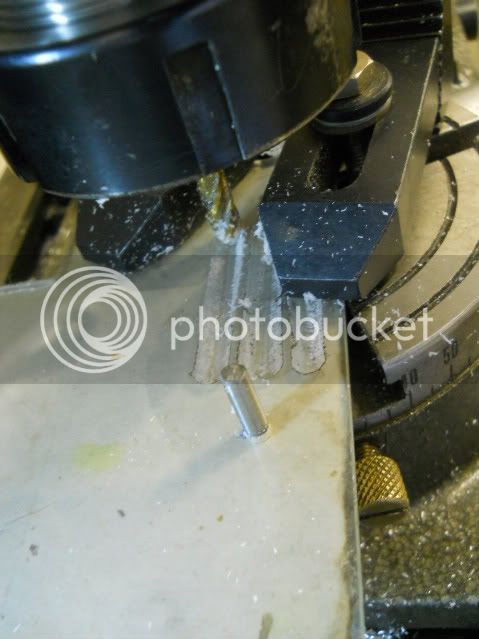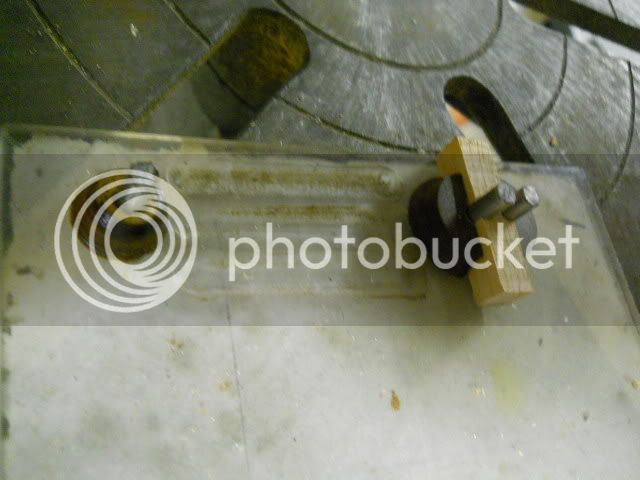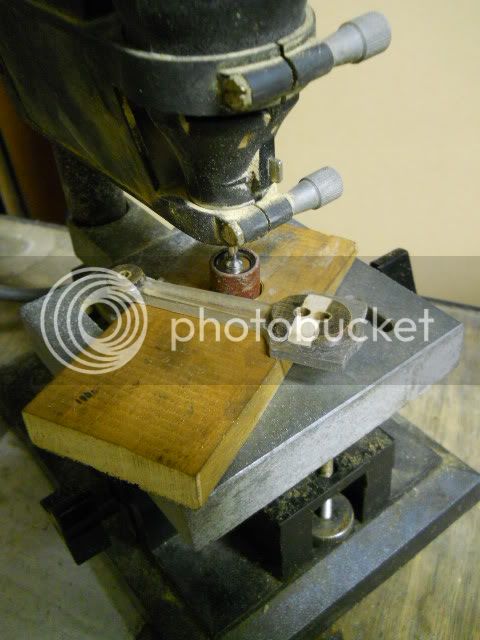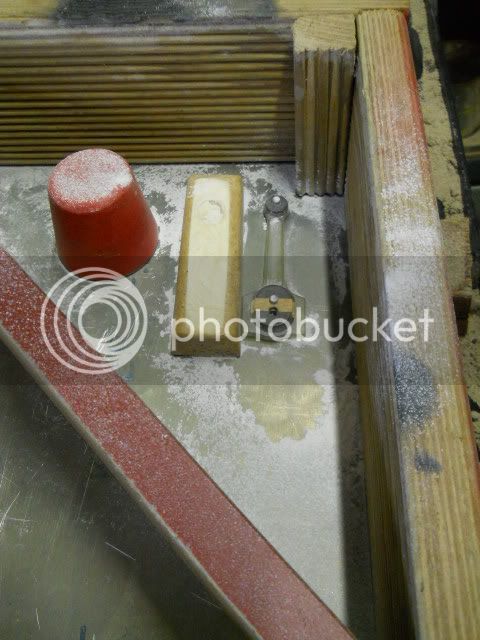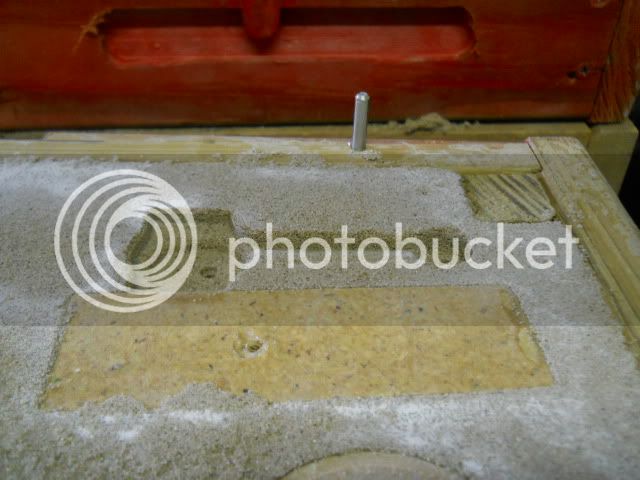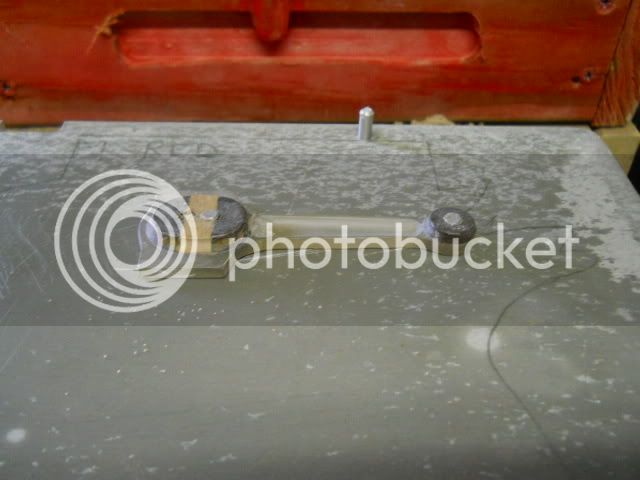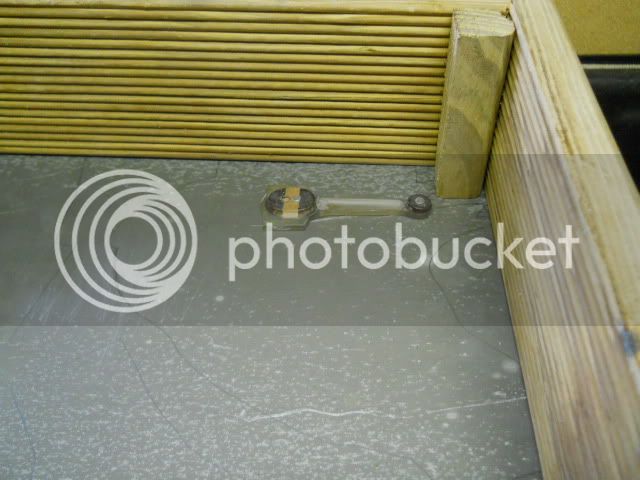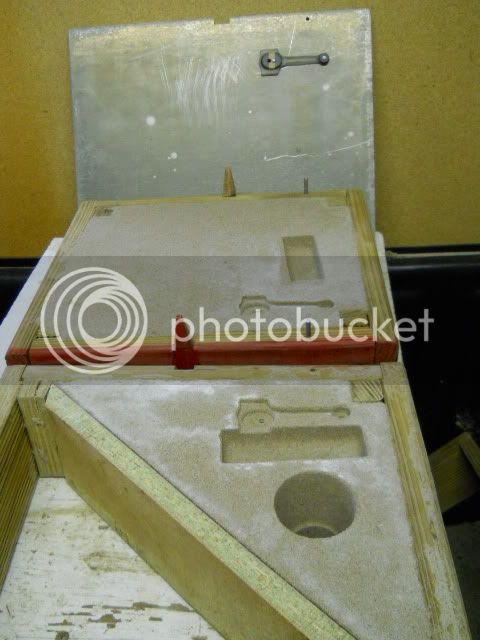Wow where did the last two months go? ???
Well Pete was keen to knock some swarf off the new castings so he promptly set about doing just that - in the process he identified there was not enough machining allowance on the top and bottom of the casting.
(Also noticed the height of the push rod boss as published is 1/4" too low at 1-5/8" should be 1-7/8". So that casting is destined for a return trip to the furnace )
I appreciate the sacrifice you made there Pete.
So the pattern was due for some alterations. 3mm on the base and 6mm on the top that should allow plenty of room for a good cleanup.
Now the core prints have moved so the corebox needs to be changed to suit.
(The previous top core prints weren't a good fit in the mold so I'll take the opportunity to fix that up)
To fixthe top core prints I needed a more precise tapered hole for the top of the core box.
To make this tapered hole, I took an old 1" wood spade drill and ground away to the desired angle (ensuring to keep it cool so as not to lose the temper){the steel not mine} :

carefully checking for symmetry as I go.
Next is the corebox itself, which is now about 9mm too short.
I added 6mm to the top of the water jacket formers - At the bottom I left the corebox unchanged and just made the core print on the pattern 3mm shorter, there by making all correct again - in theory at least.
All that is left now is to cast some more and see what comes out.
and Here it is
Cheers
Bez
 so I won't be joining you in that feast.
so I won't be joining you in that feast. 




